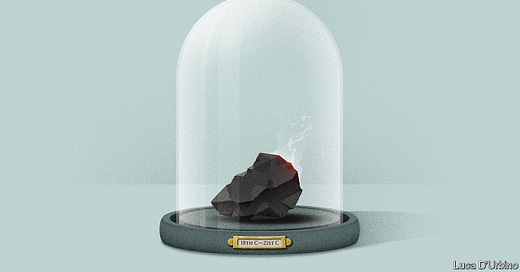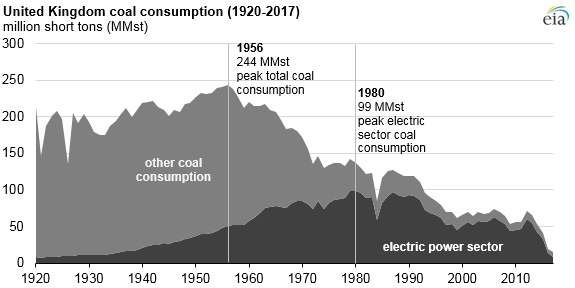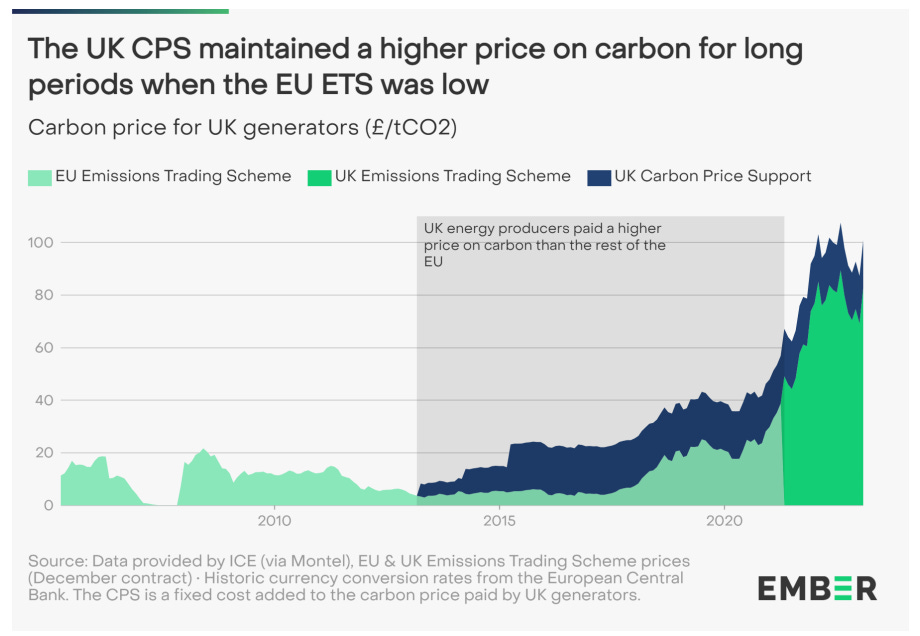Britain makes coal history
Unique approach to carbon pricing instrumental to securing coal's fate
Welcome to Carbon Risk — helping investors navigate 'The Currency of Decarbonisation'! 🏭
If you haven’t already subscribed please click on the link below, or try a 7-day free trial giving you full access. By subscribing you’ll join more than 4,000 people who already read Carbon Risk. Check out what other subscribers are saying.
You can also follow my posts on LinkedIn. The Carbon Risk referral program means you get rewarded for sharing the articles. Once you’ve read this article be sure to check out the table of contents [Start here].
Thanks for reading Carbon Risk and sharing my work! 🔥
Estimated reading time ~ 7 mins
At the end of this month, Britain’s last coal-fired power station will close.
The 2 GW Ratcliffe-on-Soar power station in Nottinghamshire opened in 1968. The plant emitted around 2.7 Mt CO2 per year, making it the country’s fifth largest emitter. The largest single source of CO2 emissions is the Drax biomass power station (11.5 Mt CO2, more than 4x larger than Ratcliffe).1
The end of coal burning has been a long time coming. The Industrial Revolution kicked off in the late 18th Century with the invention of James Watts coal-powered steam engine. Over a century later in 1882, the Holburn Viaduct power station in London became the worlds first coal-fired power station.
Fossil fuels including coal have transformed the standard of life for Britain’s citizens, as they have for people elsewhere around the world. However, the cost in terms of air pollution eventually became too high a cost to bear.
The Great Smog of 1952 resulted in thousands of deaths. It prompted Parliament to pass The Clean Air Act four years later, encouraging households and nearby factories to switch to smokeless fuels. It marked a turning point as demand for coal peaked at 244 Mt in 1956 (see Prosperity bends the curve).
Demand for thermal coal for electricity generation continued to grow for at least another two decades, but here too, coal’s place in the energy system would eventually reach an inflexion point. In 1980, the UK’s power generators, including Ratcliffe-on-Soar, burned through close to 100 Mt. Competition from more efficient and less carbon intensive gas-fired generators, more onerous environmental policies, and the rise of wind and solar generation would eventually seal coal’s demise…at least in the UK.
But in the early 2010’s the EU carbon price was nowhere near the level it needed to be to begin pricing out coal. Financial uncertainty due to the European debt crisis, coupled with global climate policy disunity in the aftermath of COP17, hit carbon prices hard. From a high of near €17 per tonne in May 2011, the EU carbon price fell to less than €5 per tonne by mid-2013.
The over-riding conclusion was that the carbon price was too low and too unstable if the UK was ever to meet the requirements of the 2008 Climate Change Act. In response, the government announced in 2011 that a top-up carbon tax levied on power generators would be introduced, payable in addition to the prevailing EU ETS carbon price. The Carbon Price Support (CPS) as its known was launched in 2013 at £5 per tonne, it rose to £9 per tonne CO2 in 2014, and then finally to £18 per tonne in April 2015. In response to concerns over UK industry competitiveness the CPS was frozen at £18 per tonne.
Nevertheless, the year-on-year doubling in the CPS to £18 per tonne had a dramatic impact on coal plant economics. In addition to the EU ETS price it meant that UK generators were paying £23.50 per tonne of CO2, over four times the prevailing price payable by utilities on the continent. For the first time since 2010 the cost of generating power in the UK using thermal coal had risen above that of natural gas. The recent energy crisis and consequent high coal prices switched the generation incentives away from natural gas and back towards thermal coal. The reprieve was to be brief, and was but a minor detour on the road towards coals complete phaseout.
Keep reading with a 7-day free trial
Subscribe to Carbon Risk to keep reading this post and get 7 days of free access to the full post archives.






